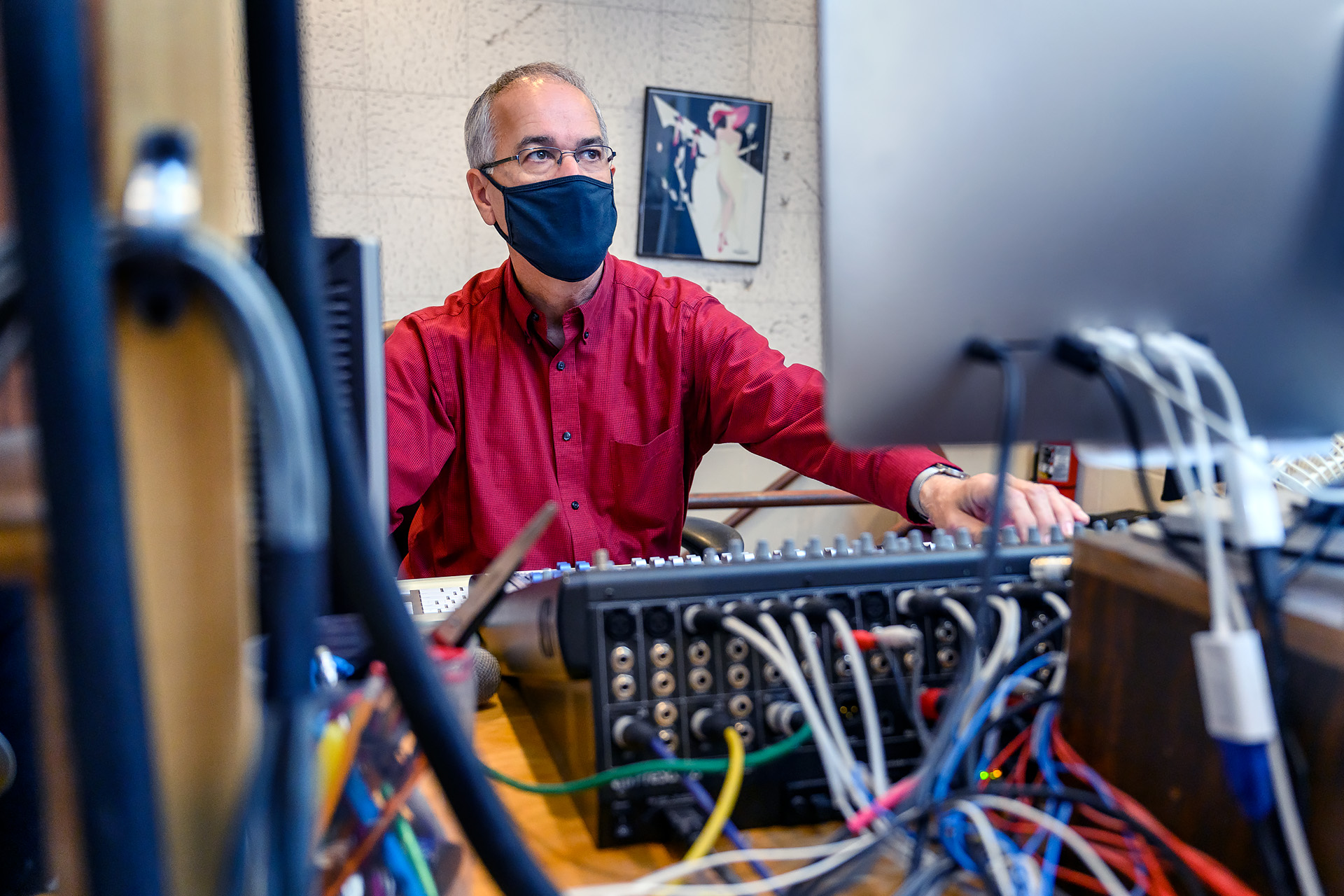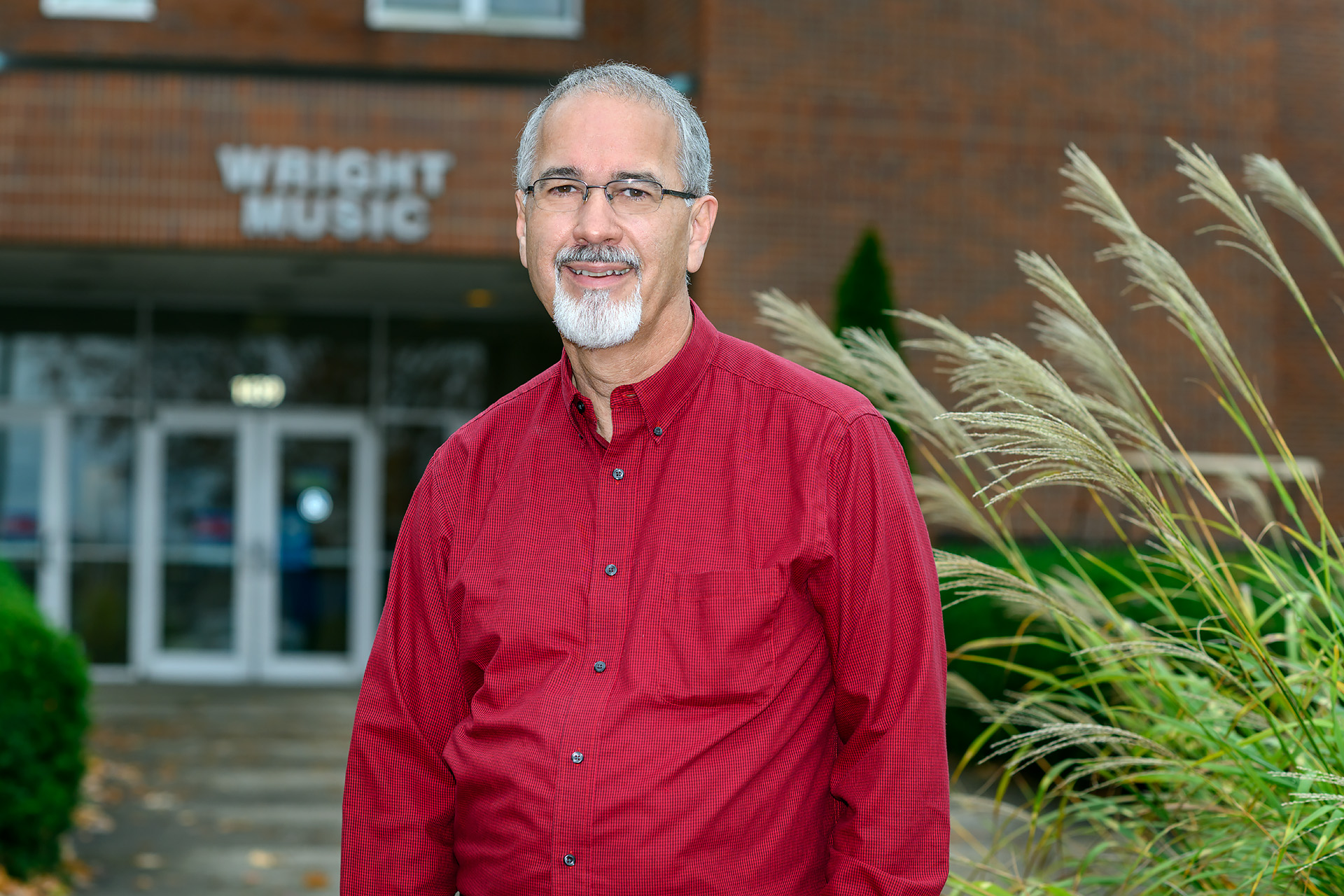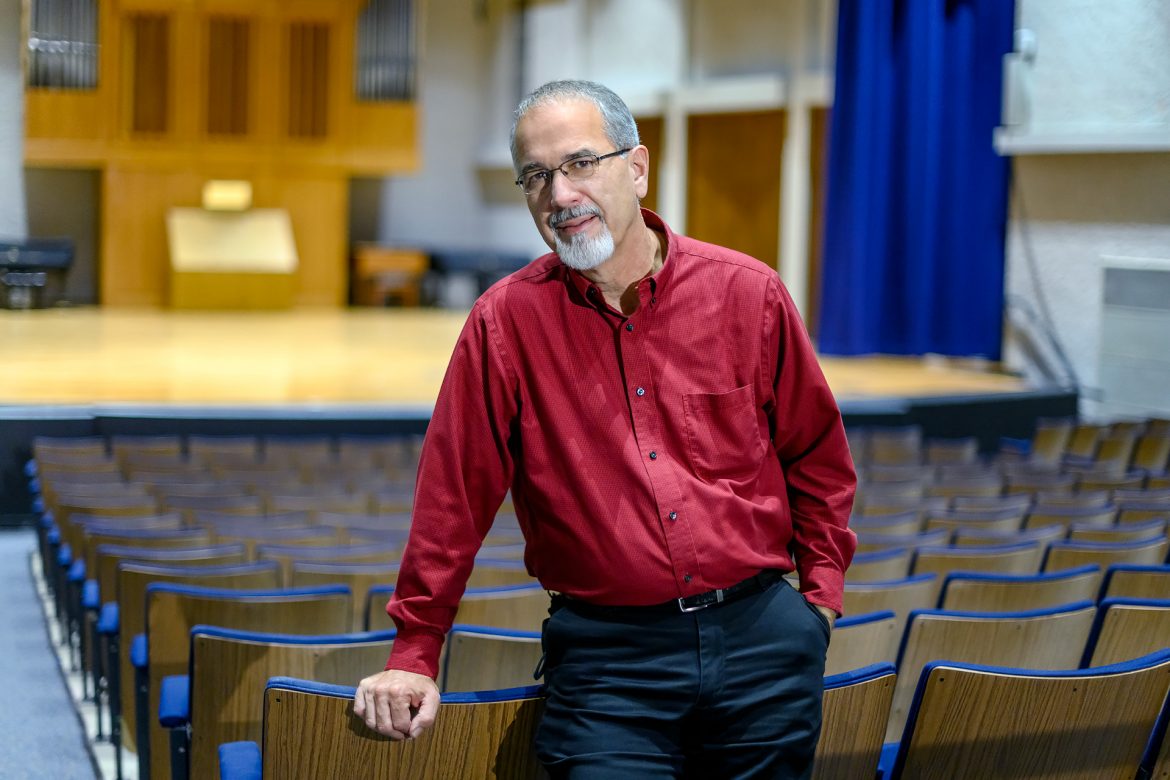Tim Musselman is a humble man. Modest, even. The manager of facilities and publicity at MTSU’s School of Music describes his responsibilities as being an “implementer and a problem solver.”
The catch-all nature of the work he has undertaken since joining the School of Music in 2000 began almost immediately when he raised his hand to be the SoM’s webmaster. Although he recently relinquished that particular responsibility, the knowledge he gained surely informs other areas of his ever-evolving work. For instance, he is responsible for ensuring events held at the T. Earl Hinton Music Hall, MTSU’s 400-seat performance venue, go off without a hitch. In the age of COVID-19, that means providing high-quality livestreams of concerts and recitals as audiences in the venue are all but shut down.
“Our concerts now have no one in the audience other than faculty and a handful of classmates,” Musselman said. “But there are no community members and no parents, so it’s extra important that the livestream is good.”

Tim Musselman, School of Music faculty, Manager Facilities and Publicity at Wright Music Hall. (Photo: J. Intintoli)
Musselman says the links to the livestream of the programs are available on the calendar website. The videos remain available for 30 days after airing and an edited version is posted to the School of Music’s YouTube channel.
“Before COVID, we used to get maybe 20 or 30 people watching the livestream,” Musselman said. “Now, we’re getting between 200 and 300. The livestreams have been a really big deal for us.”
But closing off the in-person audience was the easy part. And, to a lesser extent, so was the technical component of producing a performance video involving a cameraand a dozen or more microphones. The real trick was finding ways to keep the musicians and vocalists safe during practices and performances. After all, keeping them six feet apart on stage is only the beginning.
Pre-COVID, the School of Music’s 30 or so practice rooms would often bustle with activity, with musicians and vocalists often overlapping their sessions, and sometimes offering impromptu critiques of one another’s performances. For the foreseeable future, that type of supportive interaction is a thing of the past; one person in the room at a time, and each room must stand vacant for 15 minutes of “air-out” time between sessions, Musselman explained.

Tim Musselman, School of Music faculty, Manager Facilities and Publicity at Wright Music Hall. (Photo: J. Intintoli)
And the live performances in Hinton Hall are governed by additional COVID-related safety precautions. Of course, social distancing is step one: stickers on the floor mark six-feet from student to student in the house (or audience) and tape designates six feet apart on stage allowing three feet from the walls, limiting the space to about one-third capacity.
But the subsequent steps are where the creativity kicks in. First, rules are rules, so everybody has to wear a mask when inside. That may be easy to incorporate for musicians of stringed and percussive instruments. But wearing a mask can create obvious logistical issues for musicians playing brass and woodwind instruments. Of course, the solution — cutting a slit in the mask to accommodate the skin-to-mouthpiece necessary to play a trumpet creates subsequent problems. But, it turns out, there’s a solution to that, too.
“Musicians create aerosols by blowing into instruments,” Musselman explained. “Well, the brass instruments now have a ‘bell sock’ that covers the end opposite of the mouthpiece.
“Even with the bell sock, trombones require a few extra feet of space, and I’m not exactly sure why,” Musselman said. “And the flutists have baggies.”
Implementing these COVID-related measures, including signage to direct foot traffic in the School of Music’s classrooms, hallways, and stairwells, are just a few of the other ways Musselman’s job keeps him on his toes.
“It’s not like I come up with all these brilliant plans,” Musselman said, referring to the university’s plan for making campus safe for students, faculty, staff, and visitors alike in the age of the coronavirus pandemic. “I’m just trying to make their rules fit.”
-Skip Anderson (jpanderson@mtsu.edu)


COMMENTS ARE OFF THIS POST